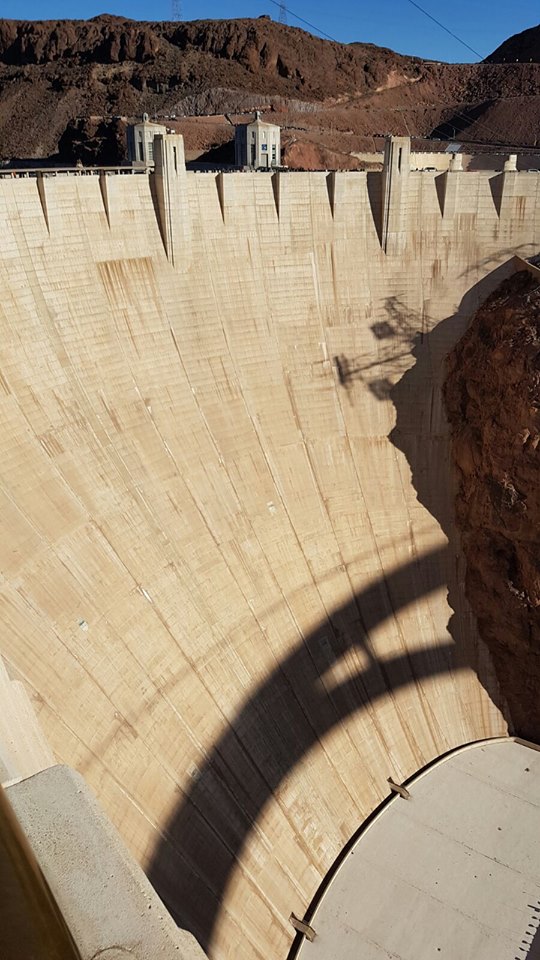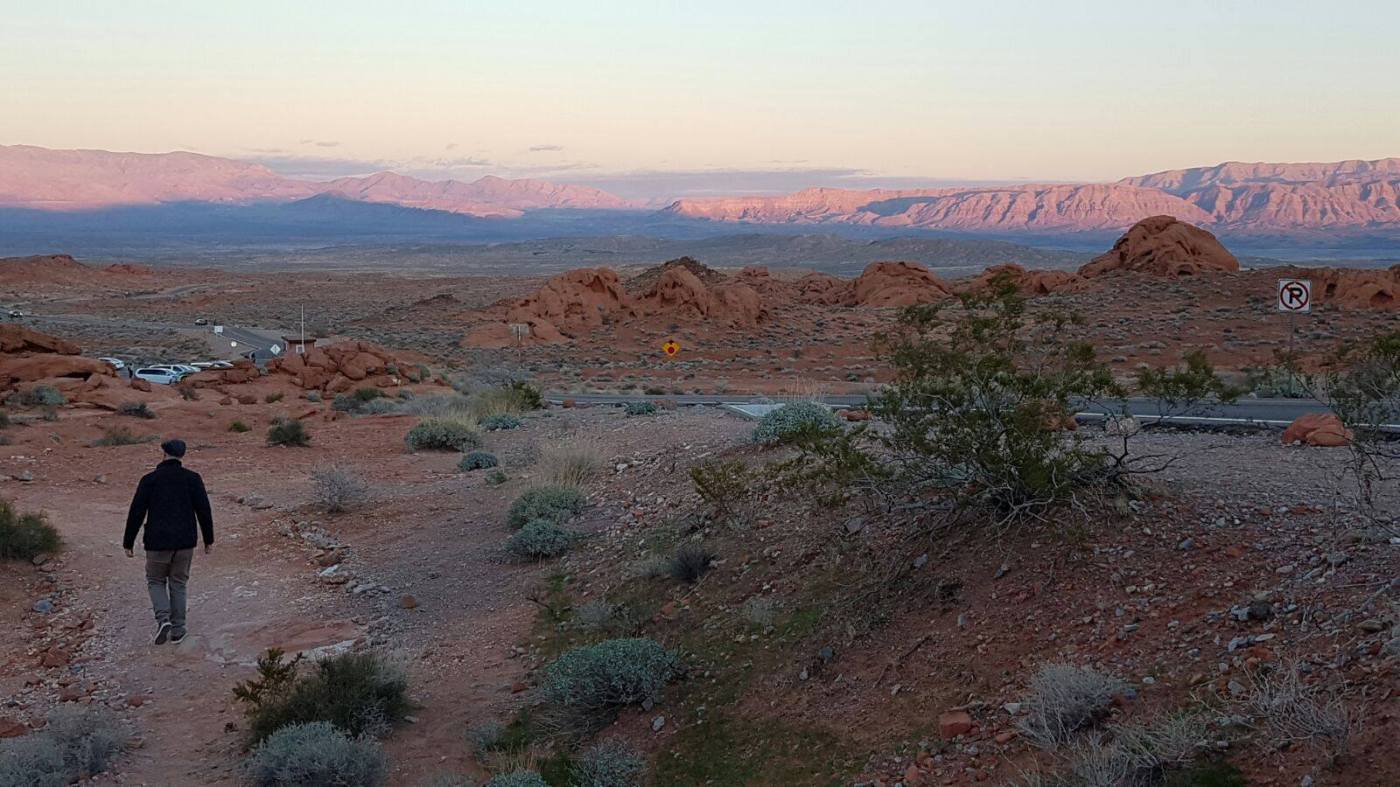Sorry about the terrible title. I almost didn’t use it but then I thought it might serve as an apt warning; the content of this post is a little ‘facty’. Worse, because most of the information was gleaned from a tour guide and some leaflets, I haven’t even cited any sources.
Las Vegas has a reputation to uphold. It stars in lots of films and TV shows and always in a certain role. If Las Vegas were a person, she or he would be described as ‘a character’.
“Simon, lock the drinks cabinet, my Aunt Vegas is coming for the weekend.”
“Martha, I’m really sorry, my brother Vegas taught the kids how to twerk.”
My recent visit was fantastic – everything you’d expect. I ate too much, drank a bit, gambled a little, and upended my usual wake-sleep cycle. And that was only a two-day visit.
The modern city is awe-inspiring for its conspicuous consumption: the enormous hotels, the food and drink available everywhere around the clock, the unashamed promotion of strip clubs, the bright lights, the Bellagio fountains, the unsettling ceiling of the Venetian. All of these things, though unexpected in their mind-bogglingness, were not surprises. The flash and glitz of Vegas is familiar from film and TV although definitely worth seeing for real at least once (and probably, for many people, never again).
A real surprise to me was learning about the incredible history of the city and its surroundings and also getting to witness the remarkable beauty of the Mojave Desert in which it sits. Vegas is a man-made wonder, but its surrounding natural splendor is much more marvelous.
Las Vegas is a modern creation, only having been founded as a city in 1905 as a railroad company sold off land alongside their new line from LA to Salt Lake City. Until then, Las Vegas (‘The Meadows’, named thus for its slight oasis-like quality as the site of wells on desert trade routes) had little history of permanent settlement. Mormon traders briefly built a fort there but it was abandoned soon after. I’m guessing they wouldn’t really like it now anyway.
In that same year, as Las Vegas began to grow, owing to the influx of farmers taking advantage of irrigation, events that would prove critical to its future success were happening many miles to the south, at the border between Mexico and California. Very heavy snow and rainfall caused the Colorado River to overwhelm a canal and, over a period of two years, completely obliterate an entire salt-mining town and re-fill a previously dry salt-lake bed. That lake (the Salton Sea) still exists over a hundred years later.
The 1905 flooding, combined with other Colorado River floods and dry spells over the following twenty years, built the appetite for a massive dam to control the flow of the river. That dam, originally called Boulder Dam (now Hoover Dam), was built a short distance from Vegas and the many male workers involved in its construction (begun in 1930) were eager for entertainment in the form of drinking and gambling. Both were illegal at the time, but that didn’t stop people finding ways to indulge. A special town, Boulder City, was even built to house the workers away from Vegas, but to no avail. Eventually, Nevada legalized gambling, allowing Vegas to capitalize on the desires of the workers. When the dam was finished in 1936, the electricity and water it supplied, along with the stream of visitors wanting to visit this new engineering marvel, secured Las Vegas’s future as a tourist destination.
We visited the Hoover Dam on a beautiful sunny Sunday in January. It is a truly astounding thing to behold. Firstly, the aesthetic design is incredible and much more overtly stylized than a lot of engineering. Both inside and out, the buildings are adorned with sporadic beautiful touches: statues, mosaics, plaques, and memorials. Because the dam straddles the Nevada-Arizona border, the opposite ends of the dam have different times for half the year (only half the year as Arizona doesn’t indulge in daylight-saving). Aware of this, the dam’s creators installed clocks at either end of the roadway marking ‘Nevada Time’ and ‘Arizona Time’. This is just one tiny example of the many ways this dam is conceived as an attraction and not just a piece of civil engineering.

Just as satisfying are the facts about its construction. We all know what a dam looks like from the top, but I was delighted to learn that the Hoover Dam is much much wider at its base than at its tip (as we’d expect, I suppose, if any of us gave it much thought). At its thickest, it is over 200m from upstream to downstream. That is a considerably greater distance than the depth of the lake it holds back. Our guide for our visit, taking us through the fascinating interior of the power plant, explained that because earthquake prediction was a new science in 1931, the dam was ‘overbuilt’ to an extreme degree. It is considered to be able to withstand earthquakes two thousand times more powerful than are ever likely to hit that part of Nevada.

Lake Mead, the man-made lake created by the Hoover Dam, is surrounded by some of the most beautiful mountains and desert imaginable. The roads through these areas (some of which have very high tolls) should be completely bursting with sightseers, but they are empty. We were able to stop our car at the side of the road, step out, and gaze into the desert, unable to see or hear anything man-made over the entire vista. The Valley of Fire is particularly worth a visit. It is named for its deeply colored sandstone, which is enhanced by the red of the sky just before sunset. I learnt after my return that it also played Veridian III in Star Trek: Generations, and so is the final resting place of Captain Kirk.
The USA really tests one’s adjectives. I’ve already rhapsodized about Maine and now I find that was nothing in comparison to Nevada. There is a lot of anti-American sentiment in the world right now, but it’s worth remembering that whatever you think of the nastiness of its current politics, it is still a beautiful country in many ways.
